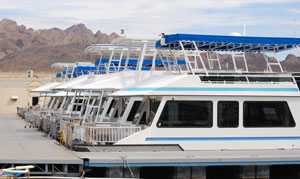CARBON MONOXIDE (CO) DANGERS IN BOATING

Overview
In August 2000, the National Park Service, through the Department of the Interior, requested assistance from the National Institute for Occupational Safety and Health (NIOSH) and the U.S. Coast Guard to evaluate visitor and employee carbon monoxide (CO) exposures from generators and propulsion engines on houseboats. This initial investigation characterized CO poisonings through epidemiologic data gathering and the measurement of severely hazardous CO concentrations on houseboats at Lake Powell. Since that initial investigation, over 800 boating-related poisonings in 35 states have been identified with over 140 of these poisonings resulting in death. Over 300 of the poisonings occurred on houseboats, with more than 200 of these poisonings attributed to generator exhaust alone. Read a 2014 summary of the research.
Facts You Should Know about CO
CO cannot be seen or smelled, but it can kill you or make you sick. All CO poisonings are preventable! Here is what you can do to prevent CO poisoning in a marine environment:
- Know the symptoms of CO poisoning:
- Headache
- Confusion
- Fatigue
- Seizures
- Dizziness or loss of consciousness
- Nausea
- Get to fresh air and seek medical help immediately if you or a family member has these symptoms!
- Install and test daily a battery operated CO detector.
- CO from engine exhaust builds up inside and outside the boat in areas near exhaust vents. Stay away and do not swim near these areas while propulsion engines or generator are running.
- Schedule regular engine and exhaust system maintenance inspections by experienced and trained technicians.
- Be aware that dangerous concentrations of CO can accumulate within seconds.
For more information on Preventing CO Poisoning on Your Boat, refer to the National Center for Environmental Health.
- Page last reviewed: June 9, 2016
- Page last updated: June 9, 2016
- Content source:
- National Institute for Occupational Safety and Health Division of Applied Research and Technology


 ShareCompartir
ShareCompartir